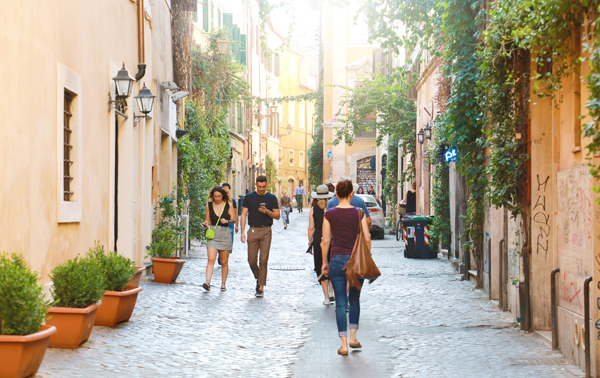
Rome, the Eternal City, is not only famous for its rich history and breathtaking architecture, but also for its extensive public transportation system. The city offers a variety of public transportation options including the Metropolitana (subway), buses, trams, and taxis, all operated by ATAC (Agenzia del Trasporto Autoferrotranviario del Comune di Roma). With such a comprehensive network, it’s entirely possible for an expat living in Rome to comfortably live without a car, relying solely on public transportation and walking. However, like any city, the efficiency and convenience of these services can vary.
Metropolitana
The Metropolitana, or Metro, is Rome’s subway system. It consists of three lines: A (orange), B (blue), and C (green), which cover a significant portion of the city. The Metro is generally safe to use, even at night, although it’s always advisable to stay alert and aware of your surroundings. It’s also a popular mode of transportation for school children and women traveling alone. A single ticket costs €1.50 and is valid for 100 minutes. However, there are also various types of passes available, such as a 24-hour pass for €7.00, a 48-hour pass for €12.50, and a weekly pass for €24.00. The Metro operates from 5:30 AM until 11:30 PM, except on Fridays and Saturdays when it runs until 1:30 AM.
Buses
Buses in Rome are a common and convenient way to get around, especially in areas not served by the Metro. The bus network is extensive, with over 350 lines running across the city. Buses are generally safe, but can get crowded during peak hours. The same tickets used for the Metro are also valid for buses. Night buses operate after the regular service ends, ensuring that public transportation is available around the clock. However, they are less frequent and the routes may differ from the daytime service.
Trams
Trams are another popular mode of transportation in Rome, especially for short distances. There are six tram lines, which mainly serve the city center and some suburbs. Trams are considered safe and reliable, although they can also get crowded during rush hours. The same tickets and passes used for the Metro and buses are valid for trams as well.
Taxis
Taxis are readily available in Rome and can be a convenient option for direct travel, especially when carrying heavy luggage or traveling in a group. They can be hailed on the street, booked by phone, or picked up from designated taxi stands. Taxis in Rome are metered and the fare depends on the time of day, distance traveled, and amount of luggage. While generally safe, it’s always advisable to ensure that the meter is running to avoid being overcharged.
Bike Sharing
In recent years, Rome has also introduced bike sharing services, providing an eco-friendly alternative for getting around the city. These services are app-based, allowing users to locate, unlock, and pay for bikes using their smartphones. The cost varies depending on the service provider and the duration of use. While cycling in Rome can be a fun and healthy way to explore the city, it’s important to note that not all areas are bike-friendly due to the city’s hilly terrain and cobblestone streets.
In conclusion, Rome’s public transportation system is diverse and extensive, making it possible for residents and visitors alike to navigate the city without a car. However, as with any large city, it’s important to plan your journey in advance, be aware of your surroundings, and stay informed about any changes or disruptions to the service.


